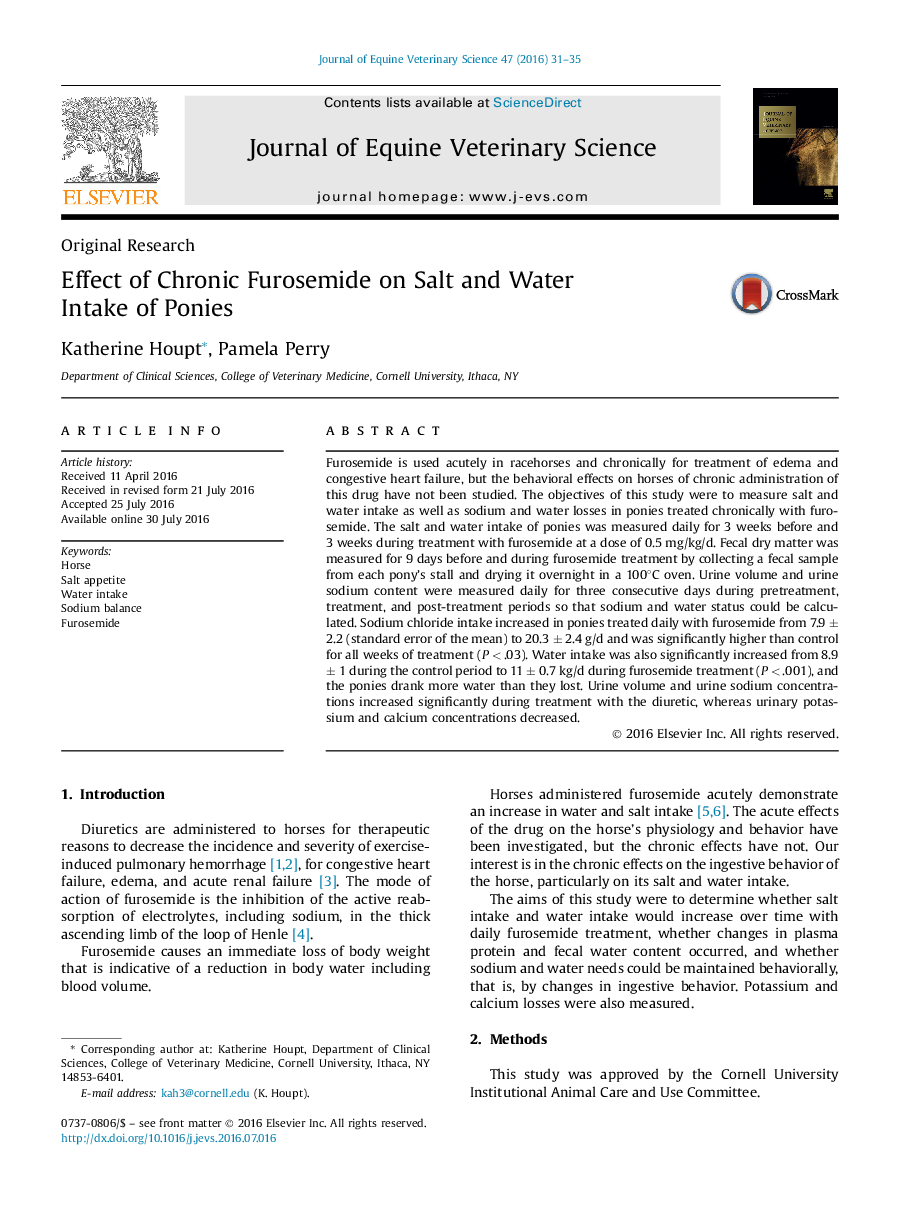| Article ID | Journal | Published Year | Pages | File Type |
|---|---|---|---|---|
| 2394317 | Journal of Equine Veterinary Science | 2016 | 5 Pages |
•Ponies consume more salt when treated daily with furosemide.•Ponies consume more water when treated daily with furosemide.•Ponies lose more urine when treated daily with furosemide.•Not all ponies ingest as much sodium as they lost during furosemide treatment.
Furosemide is used acutely in racehorses and chronically for treatment of edema and congestive heart failure, but the behavioral effects on horses of chronic administration of this drug have not been studied. The objectives of this study were to measure salt and water intake as well as sodium and water losses in ponies treated chronically with furosemide. The salt and water intake of ponies was measured daily for 3 weeks before and 3 weeks during treatment with furosemide at a dose of 0.5 mg/kg/d. Fecal dry matter was measured for 9 days before and during furosemide treatment by collecting a fecal sample from each pony's stall and drying it overnight in a 100°C oven. Urine volume and urine sodium content were measured daily for three consecutive days during pretreatment, treatment, and post-treatment periods so that sodium and water status could be calculated. Sodium chloride intake increased in ponies treated daily with furosemide from 7.9 ± 2.2 (standard error of the mean) to 20.3 ± 2.4 g/d and was significantly higher than control for all weeks of treatment (P < .03). Water intake was also significantly increased from 8.9 ± 1 during the control period to 11 ± 0.7 kg/d during furosemide treatment (P < .001), and the ponies drank more water than they lost. Urine volume and urine sodium concentrations increased significantly during treatment with the diuretic, whereas urinary potassium and calcium concentrations decreased.
